Bare root season
A hedge that is most admired by visitors to our garden is a stretch of the old rugosa rose ‘Roseraie de l’Haÿ’ with velvety, rich wine-purple, double flowers that fill the air with a wonderful fragrance from June to autumn. Its very prickly stems bear handsome foliage that turns butter-yellow in autumn and the pollinator-attracting blooms are often followed by large, cherry tomato-like red hips that provide food for birds. We grow it as a lightly trimmed, informal hedge to define the outer edges of a small pocket of elevated lawn. It also makes an excellent divider hedge when used, for example, between the ornamental garden and vegetable growing area. Being hardy, disease-resistant and tolerant of salt-laden winds, it is a good choice for coastal areas and does well in poor, sandy soils but grows well inland too.
We planted this hedge as bare root plants around this time about four years ago. Bare root plants are grown outdoors in the ground and then dug up for sale in winter while dormant, with no soil on their roots. Planting bare root plants is an economic way to plant most hedges without costing a fortune. They’re also peat free and plastic free. Garden centres usually sell bare-root hedging plants in bundles of ten or 25, or you can bulk order direct from nurseries or source them on-line. In most cases, bare root plants are cheaper than plants grown in containers. They are available to plant from November to March but planting early in the season, before Christmas, gives the roots the best chance to establish whilst there is still some warmth in the soil, ready to put on maximum spring growth.
The big tidy up
As autumn merges into winter, beds and borders that were full of pomp a few months ago are now starting to look scruffy and unkempt and so, it’s time to begin the big tidy up in preparation for next year. In our large garden, this is a process that spans several months, and we begin with the borders close to the house. Wherever possible, we avoid walking on the soil in borders during periods when it is very wet until it has dried out and become workable again as this causes problems of soil compaction, which impacts negatively on plant growth. If we have to walk over wet soil, we use a plank of wood to distribute weight more widely and minimise compaction.
Our tidying starts with cutting the old stems of perennial plants right back down to the base at soil level. All the waste material is gathered and added to the compost heap with the stems of woodier material being passed through the shredder to make composting easier. Plants with attractive seed heads such as grasses, sedums, rudbeckias, alliums, Jerusalem sage, echinacea, teasel, astilbes and eryngiums are left to add sculptural interest and their seeds will provide food for hungry birds. These will be cut back later before new shoots emerge. As we work our way through the beds and borders, we will lift and divide any large or congested clumps of perennials, discarding old and unproductive central portions and replanting the young outer sections. The bare spaces between plants are lightly forked over to relieve surface compaction, prevent growth of mosses and liverwort and improve drainage. We finish off by spreading a deep mulch (7 to 10 cm) of compost over the entire area to conserve soil moisture, help condition the soil and reduce annual weed growth. Over the coming months, earthworms will work this material down into the soil enriching it for the season ahead.
Plant tulips now
November is tulip-planting time. Use only healthy, undamaged, mould-free bulbs. The essential thing with all tulips is to make sure that they have good drainage. While it is generally recommended to plant tulip bulbs about three times the depth of the bulb, I prefer to plant them as deep as possible, often 25cm or more. The deeper they are planted, the stronger and straighter the stem will be, and this also encourages them to come back year after year.
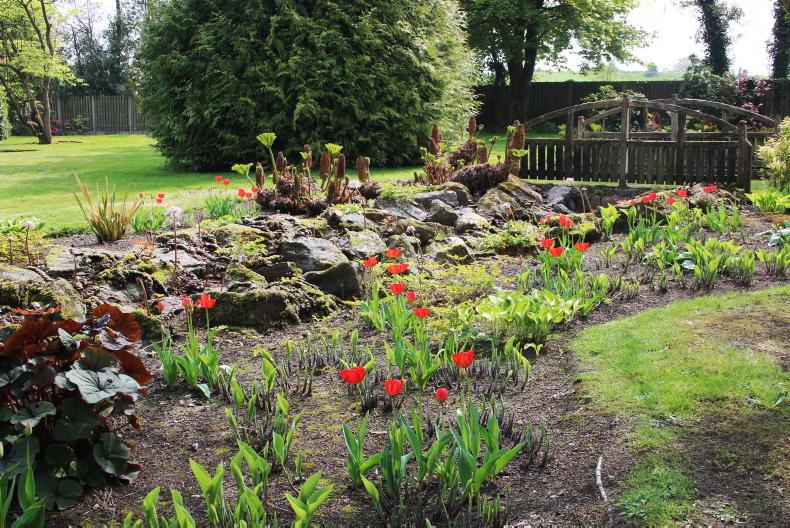
Plant tulips now. \ Mary Keenan
Deep planting matters less if they are to be treated as annuals and dug up after they have flowered. I like to thread drifts of a single tulip variety like bright red ‘Apeldoorn’ through our perennial borders. These provide pops of colour between the fresh greens of emerging new leaves of perennials, which will then fill out to conceal the foliage of the tulips as they die back. If you’ve bought other spring-flowering bulbs and haven’t got around to planting them yet there is still time — they may just flower a bit late in their first year.
Timely reminder
Begonia tubers from summer container displays are very easy to keep from year to year as long as they are stored frost-free and checked occasionally for signs of rot. I wait until the fleshy stems have died down naturally before knocking the tubers out of the container and carefully removing the compost from around them. Place them in labelled paper bags and cover them with a layer of dry compost or sand for insulation. Store the tubers in a dry, dark, cool area where temperatures can be kept above freezing.
Collect fallen leaves from around rose bushes and pick off any remaining ones still clinging to bushes that show signs of disease. This helps prevent fallen leaves acting as a source of infection next spring. The rootstocks of grafted plants such as fruit trees, roses and certain ornamental trees and shrubs often produce vigorous shoots known as suckers. Use sharp secateurs to remove and prune them to the ground now. 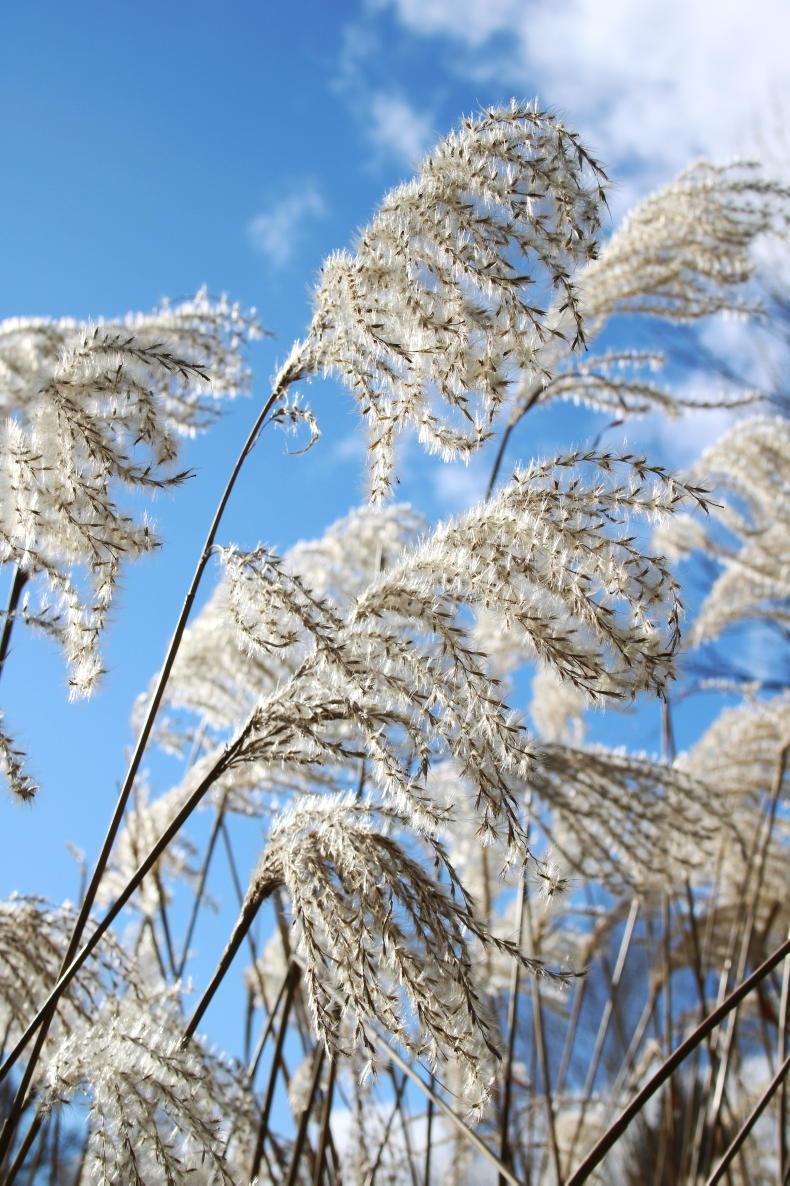
Lingering seedheads of Miscanthus sinensis ‘Kaskade’ remain attractive through winter and need not be cut back until spring. \ Mary Keenan
Grass has kept growing in this mild autumn, so the lawn may need at least one more mowing to shorten grass length and remove fallen leaves.Many garden clubs around the country will hold Christmas gala floral demonstrations. Check out listings in The Irish Garden magazine, local newspapers, club websites and social media. Events during November include:
Tuesday, 15 November: Cork Flower Club’s Christmas gala floral demonstration by Karen Frew entitled ‘The Holly and the Ivy’. Time: 8pm. Venue: Rochestown Park Hotel, Cork. Tickets €20.Wednesday, 23 November: Dungarvan Flower and Garden Club’s 50th anniversary charity Christmas gala in aid of Waterford Hospice. Floral demonstration by Janet Maddock entitled ‘All I Want for Christmas’. Time: 8pm. Venue: The Park Hotel, Dungarvan.Tuesday, 29 November : Galway Flower & Garden Club’s Christmas floral demonstration with John Paul Deehan entitled ‘Holidays are Coming’. Time: 8pm. Venue: Menlo Park Hotel, Galway.Wednesday, 30 November: Nenagh Flower & Garden Club’s Christmas gala floral demonstration by Margaret Ahern entitled ‘The Magic of Christmas’. Time: 8pm. Venue: Abbey Court Hotel, Nenagh, Co. Tipperary. Admission €10.Mary Keenan and Ross Doyle run Gash Gardens, Co. Laois open to the public. www.gashgardens.ie
Read more
Mary Keenan's Garden Diary: celebrating trees and getting started on planting
Mary's Garden: a late summer spruce up
Bare root season
A hedge that is most admired by visitors to our garden is a stretch of the old rugosa rose ‘Roseraie de l’Haÿ’ with velvety, rich wine-purple, double flowers that fill the air with a wonderful fragrance from June to autumn. Its very prickly stems bear handsome foliage that turns butter-yellow in autumn and the pollinator-attracting blooms are often followed by large, cherry tomato-like red hips that provide food for birds. We grow it as a lightly trimmed, informal hedge to define the outer edges of a small pocket of elevated lawn. It also makes an excellent divider hedge when used, for example, between the ornamental garden and vegetable growing area. Being hardy, disease-resistant and tolerant of salt-laden winds, it is a good choice for coastal areas and does well in poor, sandy soils but grows well inland too.
We planted this hedge as bare root plants around this time about four years ago. Bare root plants are grown outdoors in the ground and then dug up for sale in winter while dormant, with no soil on their roots. Planting bare root plants is an economic way to plant most hedges without costing a fortune. They’re also peat free and plastic free. Garden centres usually sell bare-root hedging plants in bundles of ten or 25, or you can bulk order direct from nurseries or source them on-line. In most cases, bare root plants are cheaper than plants grown in containers. They are available to plant from November to March but planting early in the season, before Christmas, gives the roots the best chance to establish whilst there is still some warmth in the soil, ready to put on maximum spring growth.
The big tidy up
As autumn merges into winter, beds and borders that were full of pomp a few months ago are now starting to look scruffy and unkempt and so, it’s time to begin the big tidy up in preparation for next year. In our large garden, this is a process that spans several months, and we begin with the borders close to the house. Wherever possible, we avoid walking on the soil in borders during periods when it is very wet until it has dried out and become workable again as this causes problems of soil compaction, which impacts negatively on plant growth. If we have to walk over wet soil, we use a plank of wood to distribute weight more widely and minimise compaction.
Our tidying starts with cutting the old stems of perennial plants right back down to the base at soil level. All the waste material is gathered and added to the compost heap with the stems of woodier material being passed through the shredder to make composting easier. Plants with attractive seed heads such as grasses, sedums, rudbeckias, alliums, Jerusalem sage, echinacea, teasel, astilbes and eryngiums are left to add sculptural interest and their seeds will provide food for hungry birds. These will be cut back later before new shoots emerge. As we work our way through the beds and borders, we will lift and divide any large or congested clumps of perennials, discarding old and unproductive central portions and replanting the young outer sections. The bare spaces between plants are lightly forked over to relieve surface compaction, prevent growth of mosses and liverwort and improve drainage. We finish off by spreading a deep mulch (7 to 10 cm) of compost over the entire area to conserve soil moisture, help condition the soil and reduce annual weed growth. Over the coming months, earthworms will work this material down into the soil enriching it for the season ahead.
Plant tulips now
November is tulip-planting time. Use only healthy, undamaged, mould-free bulbs. The essential thing with all tulips is to make sure that they have good drainage. While it is generally recommended to plant tulip bulbs about three times the depth of the bulb, I prefer to plant them as deep as possible, often 25cm or more. The deeper they are planted, the stronger and straighter the stem will be, and this also encourages them to come back year after year.

Plant tulips now. \ Mary Keenan
Deep planting matters less if they are to be treated as annuals and dug up after they have flowered. I like to thread drifts of a single tulip variety like bright red ‘Apeldoorn’ through our perennial borders. These provide pops of colour between the fresh greens of emerging new leaves of perennials, which will then fill out to conceal the foliage of the tulips as they die back. If you’ve bought other spring-flowering bulbs and haven’t got around to planting them yet there is still time — they may just flower a bit late in their first year.
Timely reminder
Begonia tubers from summer container displays are very easy to keep from year to year as long as they are stored frost-free and checked occasionally for signs of rot. I wait until the fleshy stems have died down naturally before knocking the tubers out of the container and carefully removing the compost from around them. Place them in labelled paper bags and cover them with a layer of dry compost or sand for insulation. Store the tubers in a dry, dark, cool area where temperatures can be kept above freezing.
Collect fallen leaves from around rose bushes and pick off any remaining ones still clinging to bushes that show signs of disease. This helps prevent fallen leaves acting as a source of infection next spring. The rootstocks of grafted plants such as fruit trees, roses and certain ornamental trees and shrubs often produce vigorous shoots known as suckers. Use sharp secateurs to remove and prune them to the ground now. 
Lingering seedheads of Miscanthus sinensis ‘Kaskade’ remain attractive through winter and need not be cut back until spring. \ Mary Keenan
Grass has kept growing in this mild autumn, so the lawn may need at least one more mowing to shorten grass length and remove fallen leaves.Many garden clubs around the country will hold Christmas gala floral demonstrations. Check out listings in The Irish Garden magazine, local newspapers, club websites and social media. Events during November include:
Tuesday, 15 November: Cork Flower Club’s Christmas gala floral demonstration by Karen Frew entitled ‘The Holly and the Ivy’. Time: 8pm. Venue: Rochestown Park Hotel, Cork. Tickets €20.Wednesday, 23 November: Dungarvan Flower and Garden Club’s 50th anniversary charity Christmas gala in aid of Waterford Hospice. Floral demonstration by Janet Maddock entitled ‘All I Want for Christmas’. Time: 8pm. Venue: The Park Hotel, Dungarvan.Tuesday, 29 November : Galway Flower & Garden Club’s Christmas floral demonstration with John Paul Deehan entitled ‘Holidays are Coming’. Time: 8pm. Venue: Menlo Park Hotel, Galway.Wednesday, 30 November: Nenagh Flower & Garden Club’s Christmas gala floral demonstration by Margaret Ahern entitled ‘The Magic of Christmas’. Time: 8pm. Venue: Abbey Court Hotel, Nenagh, Co. Tipperary. Admission €10.Mary Keenan and Ross Doyle run Gash Gardens, Co. Laois open to the public. www.gashgardens.ie
Read more
Mary Keenan's Garden Diary: celebrating trees and getting started on planting
Mary's Garden: a late summer spruce up







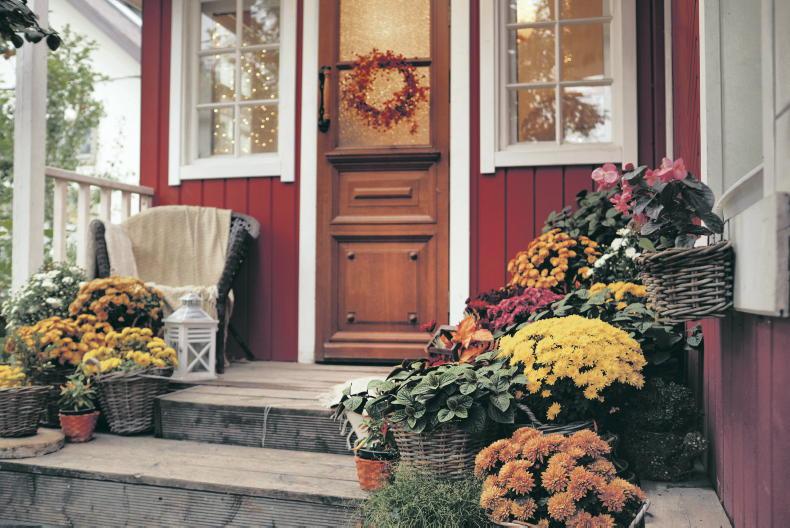
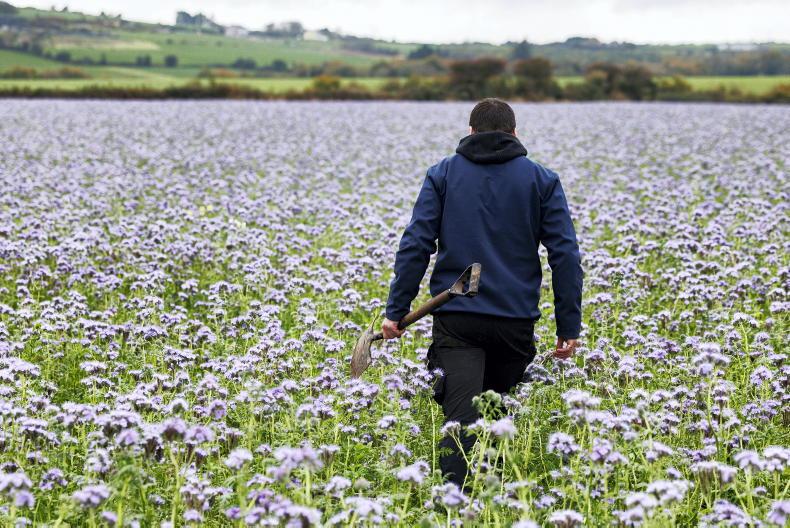
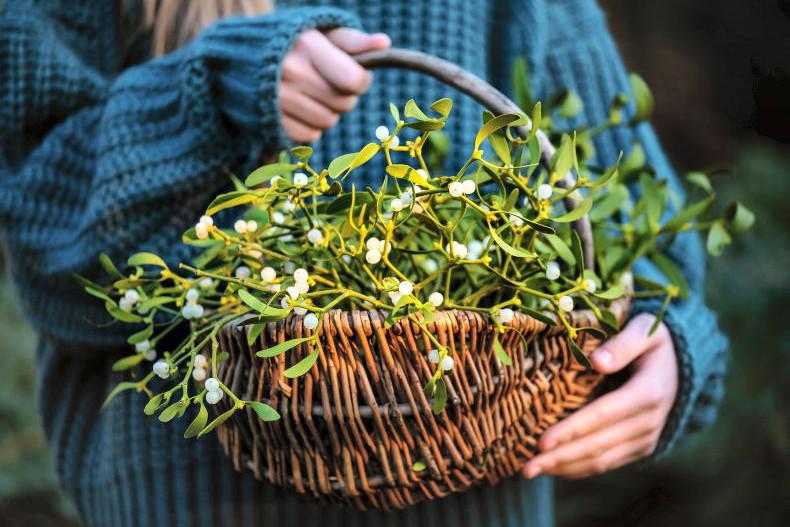
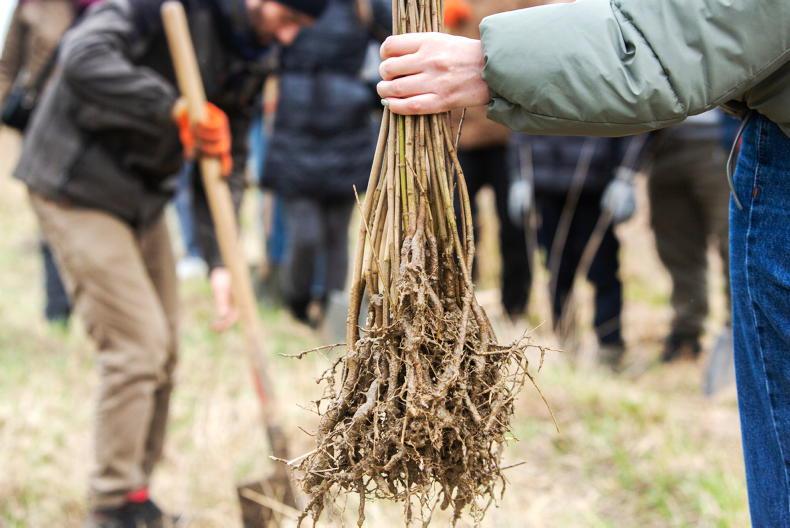
SHARING OPTIONS